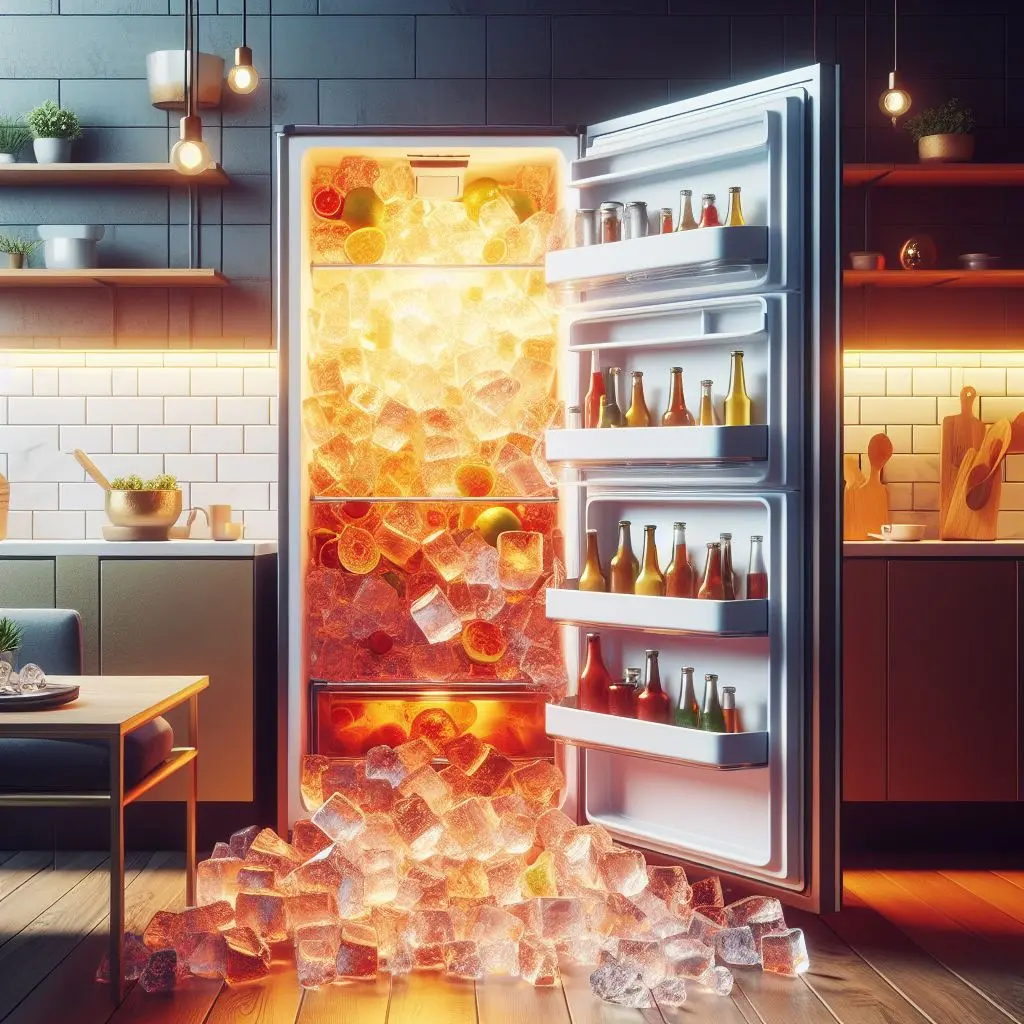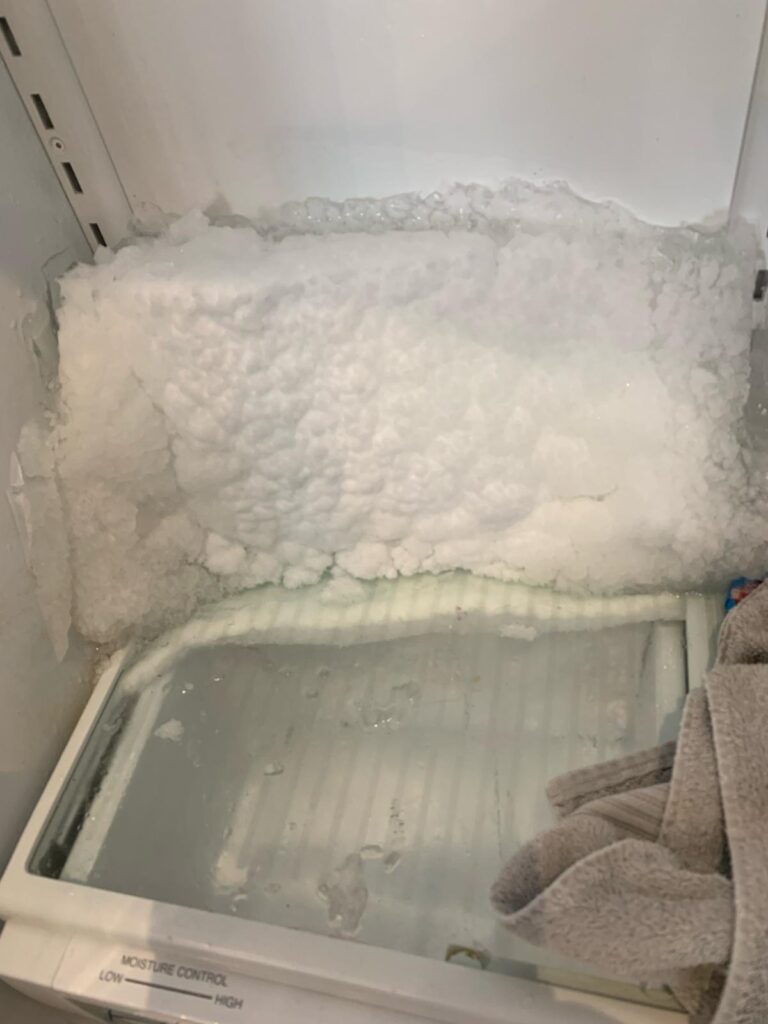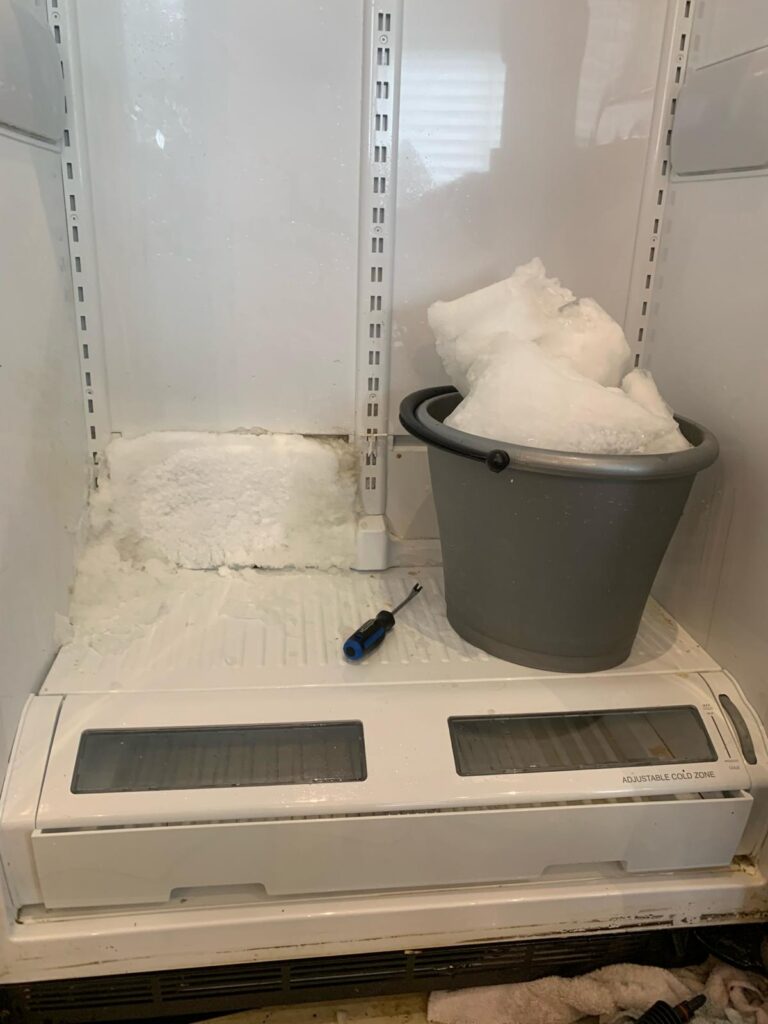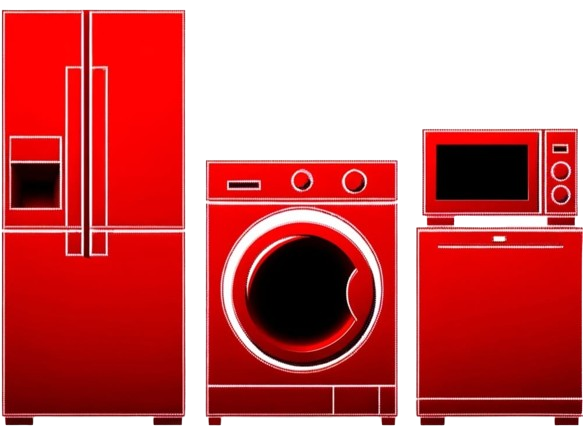March 26, 2024
Creation Date
The Hidden Costs of Ice Buildup in Your Fridge
Did you ever notice too much ice in your fridge? This extra ice can make your fridge use more power and ruin your food. Ice builds up for different reasons, like when warm air gets inside the fridge. This can make your fridge work harder than it should, using more electricity and possibly spoiling your food.
How to Defrost Your Fridge
Preparation: Getting Ready to Defrost Your Fridge
Before you start defrosting your fridge, it’s important to plan ahead. This means being ready for the process and having everything you need close by. Planning helps make sure that defrosting goes smoothly and quickly, so you can get your fridge running normally again without any hassle.
Supplies You’ll Need:
- Towels: To catch drips of water as the ice melts.
- Cooler: To keep your food cold and safe while you defrost the fridge.
- Ice Packs: To help keep the food in the cooler cold.
Defrosting Process: How to Do It Safely
- Unplug Your Fridge: Safety first! Make sure to unplug your fridge to avoid any electrical issues.
- Remove All Food: Take everything out of the fridge. Use this opportunity to check what’s still good and what might have expired.
- Use a Cooler: Transfer food that needs to stay cold into a cooler with ice packs. This keeps your food safe while you’re working on the fridge.
- Defrosting Methods: You have a few options to defrost your fridge. You can place bowls of hot water inside to help the ice melt faster. Another option is to use towels soaked in hot water and place them on the ice. Or, if you’re not in a hurry, simply leave the fridge door open and let the ice melt naturally. Remember, if you’re using hot water, be careful to avoid burns or spills.
Cleaning and Maintenance: Keeping Your Fridge in Top Shape
Once all the ice has melted, it’s time to clean the inside of your fridge.
- Wipe Down the Interior: Use a gentle cleaner or a mix of water and vinegar to clean the surfaces inside your fridge.
- Dry Everything Completely: Before you plug your fridge back in, make sure the interior is completely dry. This helps prevent mold and bad smells.
- Plug It Back In: Once everything is clean and dry, you can plug your fridge back in. Give it some time to reach the right temperature before putting your food back in.
By following these steps, you’ll not only defrost your fridge safely but also take good care of it, ensuring it runs efficiently for a long time.
Preventing Future Ice Buildup
Common Causes of Ice Buildup and Solutions
Ice buildup in your fridge can be a hassle, but understanding why it happens can help you prevent it. Here are some common reasons and how you can fix them:
1. Leaving the Fridge Door Open Too Long
Cause: If the fridge door is left open for too long, warm air enters the fridge, increasing the humidity inside. This humidity turns into ice over time.
Solution: Make sure to close the fridge door as quickly as possible after you take something out or put something in. Teach all family members to do the same.
2. Overcrowding the Fridge
Cause: When the fridge is too full, air can’t circulate properly. This not only makes the fridge work harder but can also lead to cold spots where ice forms.
Solution: Organize your fridge to ensure there’s enough space between items for air to flow freely. This helps keep the temperature consistent throughout and prevents ice buildup.
3. Faulty Door Seal
Cause: The door seal, or gasket, keeps the cold air in and the warm air out. If it’s damaged, warm air can sneak in, leading to condensation and ice.
Solution: Regularly inspect the seal for any signs of wear or damage. Clean it with soapy water to keep it sealing properly. If it’s cracked or doesn’t stick to the fridge frame, it’s time to replace it.
4. Improper Temperature Settings
Cause: Setting the temperature too low can cause your fridge to overwork, leading to unnecessary ice buildup.
Solution: Check the manufacturer’s guide for the optimal temperature settings for your fridge and freezer. Typically, the fridge should be set between 37°F to 40°F (3°C to 4°C), and the freezer at 0°F (-18°C). Adjusting to these settings can prevent ice from forming and help your fridge run more efficiently.
By tackling these common causes, you can significantly reduce the chances of ice buildup in your fridge, ensuring it runs smoothly and efficiently.
When Your Fridge Needs a Pro
Even with diligent care and maintenance, some fridge problems are tough to solve on your own.
If your efforts to reduce ice buildup don’t seem to be working, or if you think there might be a deeper issue, such as a malfunctioning defrost system, reaching out to professionals is a wise choice. Contacting a reputable service like 911 Appliance Repair can make a significant difference. Our team of trained technicians can quickly identify and fix complex issues, ensuring your fridge operates efficiently.
Benefits of Professional Appliance Repair Services:
- Expertise: Professional technicians have the knowledge and tools to diagnose and fix problems efficiently.
- Time-Saving: Instead of spending hours trying to fix the issue yourself, a professional can solve it quickly, saving you time and hassle.
- Reliability: A professional service ensures your fridge is fixed correctly, reducing the likelihood of future problems.
- Warranty and Safety: Professionals know how to handle repairs safely and may offer a warranty for their work, giving you peace of mind.
Need Professional Help? Our Services Are Here for You
If you need professional assistance, we offer a range of services from fridge repair to any home appliance repair and installation. Don’t hesitate to reach out for expert help to ensure your refrigerator operates safely and efficiently. Let us help you in handling ice buildup in your fridge!















